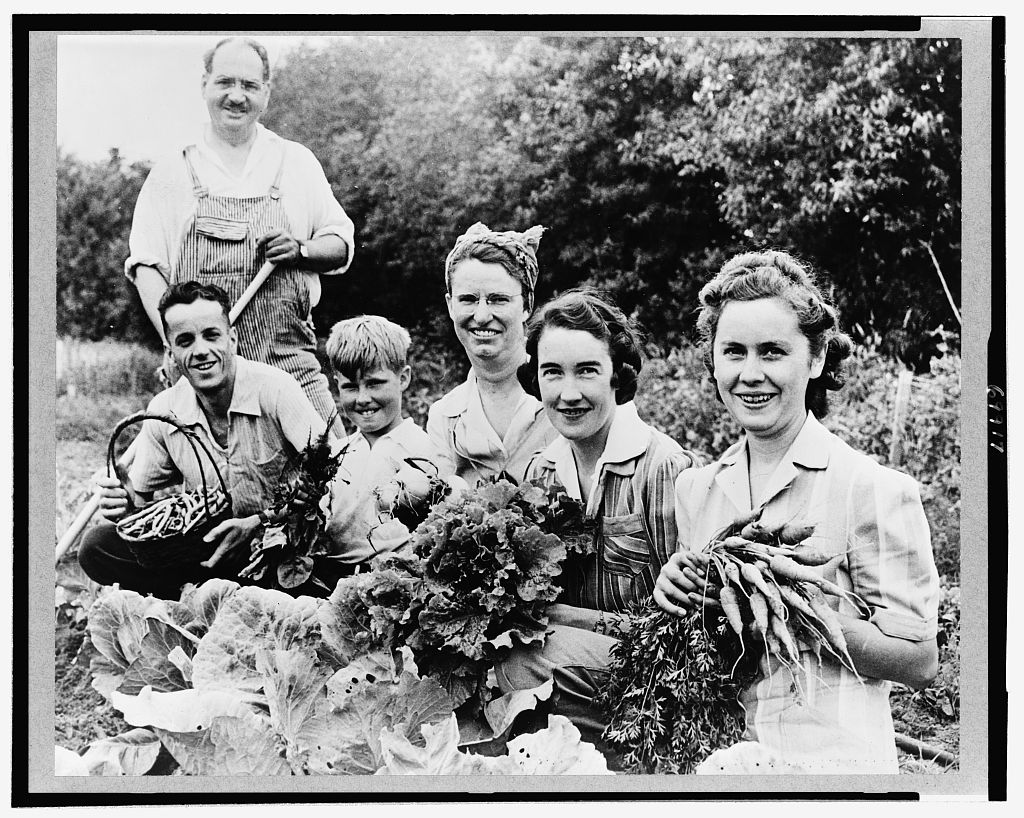Victory Gardens and Farms

Some victory gardeners showing their fine vegetables, (1942-43?). Alfred Palmer and/or Howard Hollem for the U.S. Office for Emergency Management, Photographer. Library of Congress, Prints and Photographs Division. LC-USZ62-69917.
The Victory Garden program of World War II proved iconic, and has engaged the imagination of many today, who seek to transform the nation's food system, one garden at a time.
Hayden-Smith, Rose. (2014), Sowing the Seeds of Victory. McFarland & Company, Inc.: Jefferson, North Carolina, p. 197.
Just 12 days after the attack on Pearl Harbor the Secretary of Agriculture co-hosted a conference designed to "discuss and formulate a broad coordinated program for enlisting interest in and guiding a national campaign to encourage home and community gardens as a defense measure" and "to reinforce the effort to reach the goal...of 5,760,000 farm gardens for 1942, to improve health through encouraging better food habits, and the use of high-vitamin and mineral foods, to improve home food supplies and aid in maintaining morale." (U.S. Department of Agriculture, 1942. National Defense Gardening Conference: Washington, D.C., December 19-20, 1941, p. 2).
This program would differ from the War Gardens of World War I in a shift in emphasis from producing food for overseas civilian and military consumption to one focused on maintaining the strength and physical health of the U.S. domestic population. As M.L. Wilson announced at the conference, "Total war makes demands on everyone. All of us can't take part in the military defense of the Nation; but we are a part of that military defense just the same. Before there can be victory, there must be work and toil and sacrifice. Every man, every woman, every child must be ready to take his place or her place. To do so requires health. Once cannot expect to be physically fit, mentally alert, and ready to 'take it' unless a well-balanced diet, including plenty of fruits and vegetables, has provided that energy and fuel which is necessary to keep in top-notch condition all the time" (p. 4).
This review of the Victory Garden and Farm programs of World War II showcases the materials produced by the Department of Agriculture to help the public take part in this form of "military defense."
 An official website of the United States government.
An official website of the United States government.

